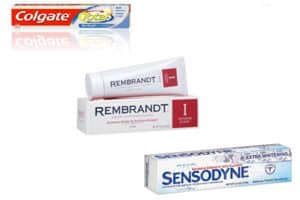Teeth Whitening treatments or bleaching are simple, non-invasive cosmetic dentistry treatments used to change the color of natural tooth enamel and is an ideal way to enhance the beauty of your smile. These are the most common cosmetic dentistry procedures. Approximately one-third of Americans used a method of teeth whitening. It’s not particularly hard to understand why – we consume a large variety of food and drink that stains our teeth. Due to hurried lifestyles, some don’t have the time to care about their teeth as much as they should, so they discolor over time.
The most common method is dental cleaning. The dentist simply removes the plaque, debris, stains, tartar, and other material in an attempt to restore the natural shade of the tooth. In lots of cases, this is enough and the patient leaves satisfied. Teeth whitening treatments are ideal for people who have healthy, unrestored teeth (no fillings).
- 1)The effects of coffee, tea, wine, and other substances that permanently stain or discolor teeth
- 2) Medications such as antibiotics like Tetracycline may discolor teeth
- 3) Fluorosis, a condition caused by absorbing too much fluoride, could affect tooth color
- 4) Aging also causes teeth to lose their bright, white color over time
This is done to determine the amount and length of bleaching, as well as to give you, the patient, a realistic picture of what you can expect. Some individuals come for bleaching even if their teeth are white enough and cannot be improved further – a condition termed “bleachorexia”. The procedure doesn’t last too long, within an hour it should be finished and you can enjoy smiling with your pearly white teeth the same day.”
You may have heard about home teeth whitening kits that are purported to whiten just as well as the dentists do. That is simply not true, as the concentrations of peroxides are markedly lower and various studies have shown that the kits have no discernible effect – aside from leaving you with a hole in your pocket. Most of these at-home whitening methods present a risk of damage to enamel. If improperly used, irritation and damage to the gums may occur. That’s why it is best to leave this to the professionals. At best, whitening kinds of toothpaste provide a short-term benefit, but they don’t use bleaching chemicals. Instead, they rely on abrasive particles in the toothpaste that removes stains and debris from the surface of your teeth. They do not really change the underlying color of your teeth and long-term use may result in irritation and sensitivity.

While bleaching is a great method of improving the appearance of your teeth and carries a very little risk of side effects, there are certain limitations that apply to bleach. Teeth whitening treatments cannot improve the appearance of amalgams, crowns, and other fillings. People with sensitive teeth should also avoid bleaching. Bleaching can cause sensitivity right after treatment is expected but should subside within a day or two, but is not recommended for children under the age of 16.
If you avoid food and drink that stains your teeth and take care of your teeth, going a year or more is very much possible. Those with “bad” habits may feel the need to whiten again after as little as a month or two. With at least a little care, half a year is realistic before needing to do touch up treatments again. Smoking is one of the major factors affecting discoloration – there is yet another benefit of giving it up. Teeth whitening treatments are a great, safe option of improving the appearance of your teeth without breaking the bank. It also isn’t invasive at all, unlike some other cosmetic dentistry procedures like veneers.
